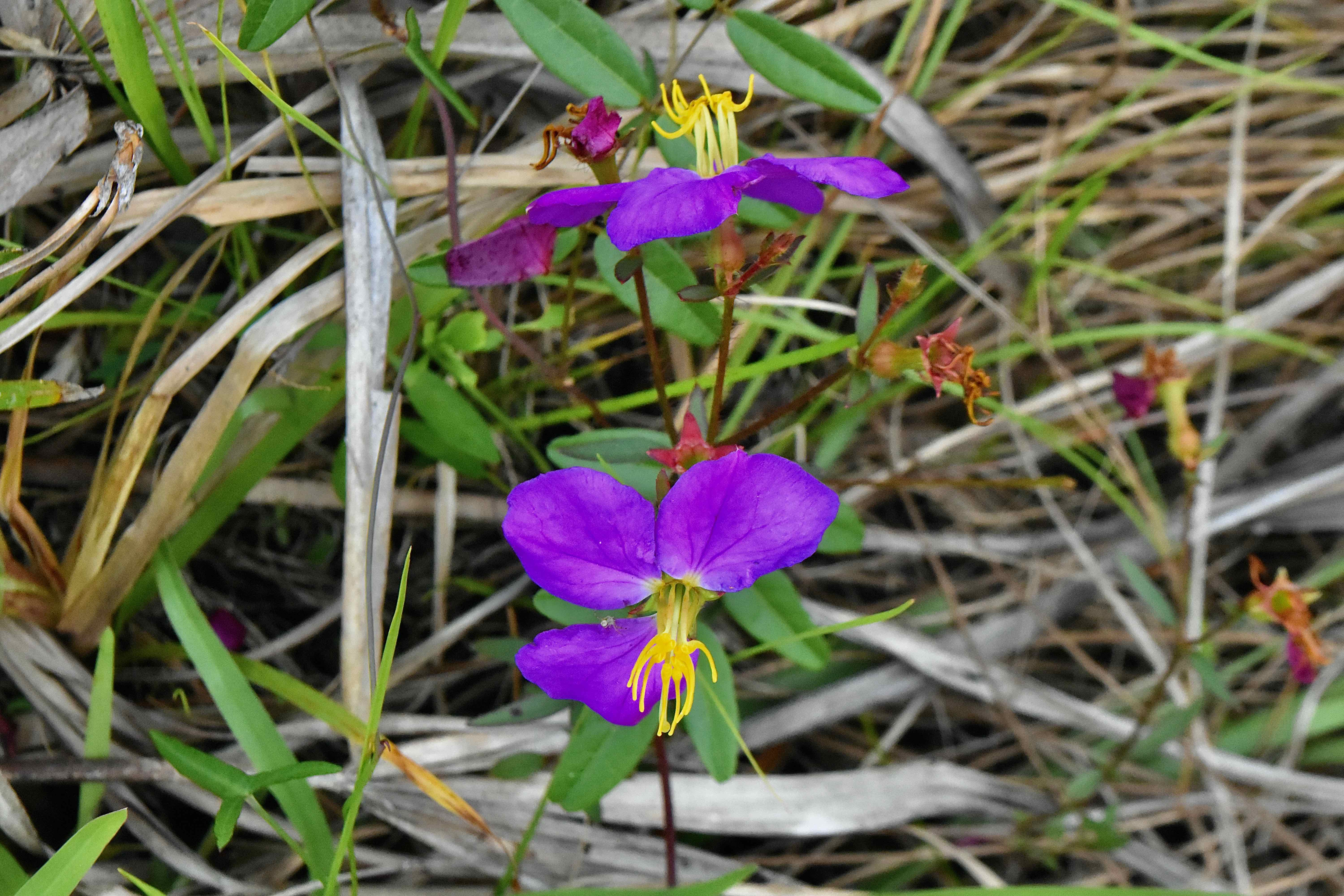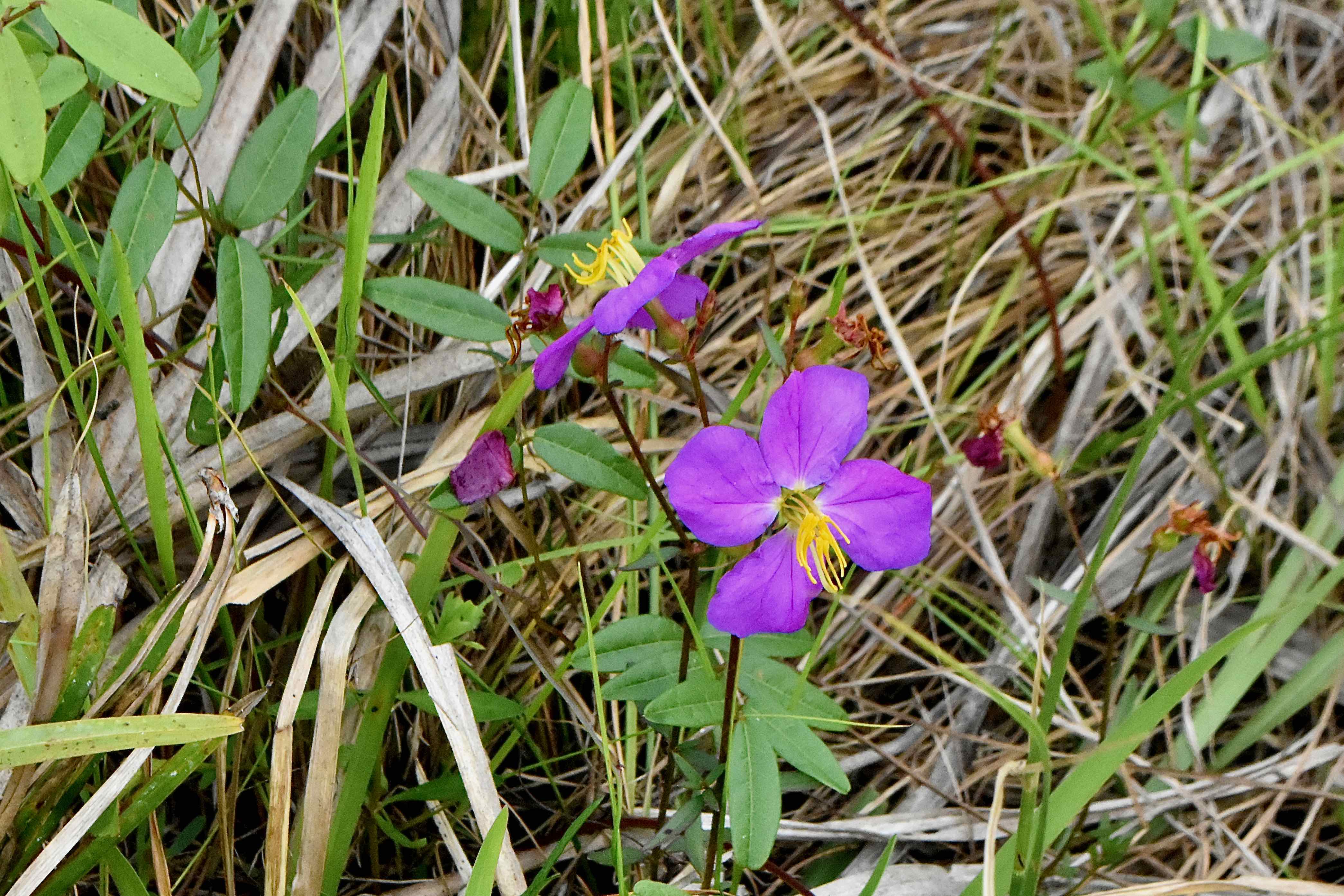There are five members of the genus, Rhexia, found growing in the wild of South Florida. All tend to like it on the wet side and all are on the rare side.
West Indian meadowbeauty, Rhexia cubensis, is par for the proverbial course, you might say.
It is a Florida native that tends to be found growing in wet prairies and flatwoods, in savannas and bogs and on roadsides. The Institute for Regional Conservations considers it imperiled in South Florida. It is not listed by by the feds under the Endangered Species Act or by any state government.
It’s found throughout most parts of the Sunshine State, including some Panhandle counties and most of the Peninsula. It is absent from Miami-Dade and Monroe among South Florida counties.
West Indian meadowbeauty’s range sweeps through the Southeast, as far north as North Carolina and along the coastal plain through South Carolina, Georgia, Alabama and Louisiana.
West Indian meadowbeauty’s natural range extends beyond our fair shores to Cuba (predictably, given its scientific name), Hispaniola (Haiti and the Dominican Republic) and Puerto Rico.
It is a perennial, reaching perhaps two feet tall. It can be single stemmed or have a few branches; the leaves are sessile, meaning they lack a leaf stem and attach directly to a branch. Leaves are somewhat variable in shape — they can be linear, linear and slightly elliptical, oblong or a little spatula-like. They are simple, slightly serrated along the edges and arranged opposite each other.
The flowers are pale pink to deep lavender, fading somewhat toward the center, each with four petals and prominent angular anthers that recall long, drooping eyelashes. The seed pods are urn-shaped. It’s a summer bloomer, going dormant in winter.
One interesting key to identifying West Indian meadowbeauty: the petals tend to break off when touched. Apparently, it’s a hallmark of meadowbeauties generally. The great Swedish naturalist Carl Linnaeus named the genus Rhexia for reasons that are unclear. The late Florida Atlantic University botany professor Daniel F. Austin speculated that it might be due to reports Linnaeus received from his field collectors that the petals fell off the plant when touched. Rhexis in Greek means “break.”
But it was one August Heinrich Rudolf Grisebach, a native of the Electorate of Hanover, Holy Roman Empire (really), who scientifically described West Indian meadowbeauty and gave it its scientific name in 1866. Grisebach was a physician and botanist who studied the plants of the Caribbean, particularly the British West Indies. Hanover later became part of Prussia and later, Germany. As a lover of history, it’s not every day we get to mention the Holy Roman Empire, so we couldn't let this opportunity slide. Now, back to botany.
We’ve seen reports that some meadowbeauties have been used medicinally by us human types, but we’ve found no references of our guy being used in any way.
Just a side note: a synonym for West Indian meadowbeauty: Rhexia floridana. A synonym is a scientific name that someone gave the species that was either never accepted by the taxonomic powers that be or has been surplanted by a newer name and is no longer used. Also, it was once identified as a subspecies of another meadowbeauty called Maid Marian, Rhexia mariana var. Portoricensis. Taxonomists did not accept that, either. Tough crowd, those taxonomists.
Alternate spellings: meadow beauty and meadow-beauty. West Indian meadowbeauty is a member of Melastomataceae, the meadowbeauty family.
JW Corbett Wildlife Management Area — Hungryland




